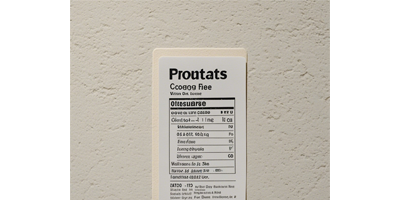Blog

In the highly competitive food market, effective food labeling is not only a legal obligation but also a powerful marketing tool. Appropriate labeling techniques can enhance product visibility, build consumer trust, and drive sales. Here are some essential food labeling techniques to consider.
1. Clarity and Legibility
The information on food labels must be presented in a clear and legible manner. Use a font size and style that is easy to read, even for consumers with visual impairments. Avoid overcrowding the label with excessive text or complex graphics that may obscure important details. For example, the product name, ingredients, and nutritional information should be prominently displayed and separated for easy comprehension. Bold or enlarged fonts can be used for key elements such as allergens or important warnings to draw immediate attention.
2. Nutritional Information Highlighting
With the increasing focus on health and wellness, highlighting nutritional information can be a significant advantage. Present the calorie count, fat, protein, carbohydrate, and fiber content in a clear and organized format. Consider using visual aids like graphs or charts to make it easier for consumers to understand the nutritional profile of the product at a glance. For instance, a pie chart showing the percentage of different macronutrients can be very effective. Additionally, if the product has any unique nutritional benefits, such as being high in vitamins or minerals, or being a good source of plant-based protein, make sure to emphasize these points prominently.
3. Ingredient Transparency
Consumers today are more interested than ever in knowing what goes into their food. List all ingredients clearly and accurately, following regulatory requirements. Use common names for ingredients to avoid confusion. If the product contains any major allergens, such as peanuts, tree nuts, dairy, wheat, soy, fish, or shellfish, highlight them in a separate section with a bold or contrasting color. This helps consumers with allergies make informed purchasing decisions quickly. Moreover, if the product uses organic, non-GMO, or locally sourced ingredients, make sure to mention these details as they can add value and appeal to certain consumer segments.
4. Brand Storytelling
Labels can be a great platform to tell the story of the brand and the product. Share the history of the company, its mission, and values. For example, if it is a family-owned business with a long heritage of making a particular type of food, mention it on the label. You can also include details about the production process, such as how the food is made, whether it is handcrafted, or if it uses traditional methods. This creates an emotional connection with the consumers and differentiates the product from mass-produced alternatives. Additionally, if the brand has any sustainability initiatives, like using recyclable packaging or reducing carbon footprint, communicate these efforts on the label to attract environmentally conscious consumers.
5. Eye-Catching Design
The visual design of the label plays a crucial role in attracting consumers' attention on the store shelf. Use colors, images, and graphics that are relevant to the product and the target audience. For example, for a children's snack, bright and fun colors with cartoon characters may be appropriate, while for a high-end gourmet product, a more elegant and sophisticated design with muted colors and fine details would be better. The label layout should be balanced and aesthetically pleasing. Consider using a unique shape or size for the label to make it stand out from competitors. However, ensure that the design does not overshadow the essential information but rather complements it.
6. Regulatory Compliance
Adhering to all relevant food labeling regulations is non-negotiable. This includes accurate product naming, proper use of claims such as "low fat," "organic," or "gluten-free" (if applicable and supported by evidence), and providing all required contact information and manufacturing details. Failure to comply with regulations can lead to legal issues and damage the brand's reputation. Stay updated with the latest regulatory changes and ensure that your labels are always in line with the law.
In conclusion, food labeling is a multifaceted aspect of the food business. By focusing on clarity, nutritional information, ingredient transparency, brand storytelling, eye-catching design, and regulatory compliance, food manufacturers and marketers can create labels that effectively communicate with consumers, build brand loyalty, and drive success in the marketplace.

Latest News
Exhibition 2023 labelexpo Asia
The 2023 labelexpo Asia show we participated in in December was a complete success. I am v...
Jun 14,2024
Oct 14,2025
What Factors Play a Role in Choosing the Optimal Production Speed for Packaging Printing Equipment?
When purchasing packaging printing equipment, production speed stands out as a critical fa...
Oct 13,2025
GET A QUOTE